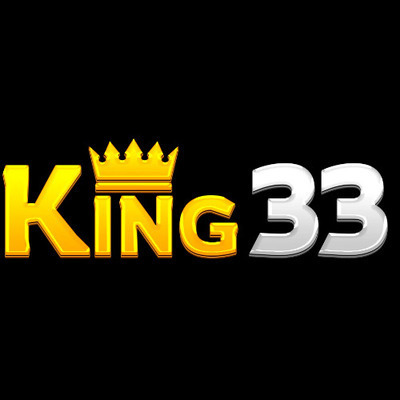Building Trust in Crypto Market Analysis: CoinMinutes' Commitment to Transparency
At CoinMinutes, we are aware that the world of crypto is a whirlwind. Prices can skyrocket or plummet within minutes. If you get bad information it can cost you a lot of money, while good information will make it easier for you to make wiser choices.
We are not about the hype. We do not have any hidden reasons. We give the market a clean and clear picture through our big and efficient data.
Our founder recollects the first blockchain venture he made in 2017. Just after he followed a "hot tip" from a YouTube guru he lost a considerable part of his savings. As a result, that incident was a very important lesson for us: the crypto universe is heavily infested with pump-and-dump, paid promoters, and people pushing coins that they secretly own types.
We built
CoinMinutes to stand apart from the crowd. This article explains our methodology and the measures we have taken to keep ourselves accountable.
Why Trust and Transparency Matter
The Risks of Misinformation
We've seen firsthand how fake news in crypto spreads like wildfire. A single tweet can move millions of dollars in minutes.
Take what happened in January 2023. Someone faked a press release about new Bitcoin regulations. The market tanked 12% in just three hours. Real people with real money got hurt. Over $300 million in leveraged positions got liquidated in a single day because of a lie.
Or last summer, when a popular influencer promoted a token on TikTok without mentioning they got paid $50,000 to do it. The token's price shot up 300%, then crashed 90% a week later. Their followers lost everything.
The Crypto Fraud Institute found that misleading information caused over $4 billion in investor losses in 2023 alone. That's billion with a B!
The Value of Credibility
We believe good information is like a shield for your money. It helps you spot scams before you invest, understand the actual risks, make decisions based on facts not hype, and know when to hold or sell.
Cornell University did a study in 2022 that confirmed what we've always believed. They found investors who used verified information sources earned 27% better returns than those who just followed social media tips. That's the difference between growing your money and watching it disappear.
Sarah, one of our regular readers, emailed us her story last month. She almost put $5,000 into a project promising "guaranteed returns." Our analysis pointed out several problems with how the project was structured. Sarah held back. Two weeks later, the whole thing collapsed. Good information literally saved her five grand.
Trustworthy information shields you from losses and empowers smart decisions in crypto.
CoinMinutes' Standards for Reliable Analysis
Clear Data Sourcing and Verification
We're picky about where we get our info. We use direct blockchain analytics, official exchange data feeds, project documentation, regulatory filings, and academic research – not rumors from social media.
We never publish anything without checking it with at least three different sources. Can't confirm something? We don't report it. Simple as that.
During the stablecoin panic last year, rumors were flying that a major stablecoin was about to collapse. Instead of jumping on the rumor bandwagon, we checked the actual on-chain data, looked at exchange orderbooks, and reviewed the reserve reports. The numbers showed the stablecoin was totally stable. Readers who trusted our analysis stayed calm while others panic-sold at a 15% loss.
We also tell you exactly when we collected our data.
Cryptocurrency changes so fast that week-old information might already be outdated.
Methodology Disclosure
At CoinMinutes, we don't just tell you what we think – we show you how we reached our conclusions. When we analyze a token, we explain which indicators we're looking at, how we calculate our numbers, what time periods we're examining, which factors we think matter most, and where our analysis might fall short.
For example, in our recent NFT market report, we didn't just say "the market is down." We laid out exactly how we calculated trading volume, how we filtered out fake trades, how we determined floor prices, and how we measured market liquidity.
This transparency lets you decide for yourself if our conclusions make sense. You don't have to just take our word for it.
Last month, when we analyzed Bitcoin's mining recovery after China's ban, we explained exactly how hashrate is calculated and which method we used. A reader who runs a mining operation spotted a flaw in our approach and suggested a better method. We updated our analysis and got more accurate results. That's the power of showing your work!
At CoinMinutes, we don't just tell you what we think – we show you how we reached our conclusions.
Ethical Practices and Disclosures
Editorial Independence
At CoinMinutes, we keep a solid wall between our analysis and money:
- We never take payment for covering a project
- Projects don't get to review our articles before publication
- We don't trade based on unpublished information
- Sponsored content gets big, obvious labels
- Our ad team can't influence what we cover
We remember when a project offered us $50,000 last year for what they called "favorable coverage" of their token. We turned it down flat. Your trust is worth way more than a quick payday.
Our writers cover both the good and bad of every project. When Bitcoin had its best quarter in years, we reported it straight. When it dropped 30% in a month, we covered that with the same balanced approach.
Conflict of Interest Policies
Everyone on the CoinMinutes team follows strict rules:
- We publicly list which cryptos we own
- Writers can't cover coins they personally hold
- After covering a coin, we wait 30 days before trading it
- We don't accept gifts or special access from projects
- We go through conflict checks every three months
You might think this is overkill, but it matters. In 2023, a major crypto news site got caught promoting tokens their staff secretly owned. Pretty shady, right?
We don't just disclose conflicts – we prevent them before they happen. When a new analyst joined us from a major DeFi project last year, they couldn't write about anything related to their former employer for six months. This cooling-off period keeps our coverage fair.
Accountability and Reader Engagement
Feedback Mechanisms
Your input makes us better. We collect feedback through comments on articles, monthly surveys, a simple form for reporting mistakes, voting on which topics we should cover, and Q&A sessions with our analysts.
And we actually use this feedback! Last year, several readers pointed out that our DeFi yield analyses weren't properly explaining the risks of impermanent loss. So we completely changed our approach to better capture this risk.
We don't just listen – we act. Our popular "Blockchain Basics" series came directly from beginners telling us they felt lost reading our more technical stuff.
CoinMinutes listens, corrects, and grows together with our readers.
Correction and Update Policy
We mess up sometimes. Everyone does. When we get something wrong:
- We fix it right away
- We clearly label the correction
- We explain what happened
- We keep the correction visible
- We look at how to prevent similar mistakes
Back in May, we got a governance vote outcome wrong because we reported based on preliminary results. Within hours of discovering our error, we published a correction and explained what happened. Was it embarrassing? Yep. But hiding it would be way worse.
We also update older articles when new information comes out. Our analysis of Layer-2 scaling solutions gets refreshed quarterly to reflect new developments and performance data.
Our correction rate last year was 2.8% of all published articles – lower than the industry average of 4.3%. We track these metrics publicly on our website's transparency dashboard.
Educating and Empowering the Community
Providing Analysis Tools and Guides
We don't just want you to read our analysis – we want to help you do your own. We offer a simple glossary that explains technical terms, guides that show you how to read different chart patterns, checklists for checking out new projects, tools for calculating how much risk you're taking, and frameworks for comparing similar protocols.
Our "How to DYOR" series teaches specific research skills. One reader told us she used our guide on checking smart contract code and discovered a "revolutionary new DeFi protocol" was just a copy of an existing project with a new name. She avoided the investment and warned others in our community.
These tools help you become self-sufficient. You won't need to blindly trust anyone's opinion – even ours.
Miguel, a college student in Texas, used our tokenomics analysis framework to evaluate a new gaming token his friends were hyping. "The token had massive early investor allocations that weren't clearly disclosed on their website," he told us. "I found this using your vesting schedule analysis template. I warned my friends, but they didn't listen. Three months later, early investors dumped and the price crashed 85%. My friends lost thousands, but I stayed safe."
Promoting Media Literacy
The crypto space is drowning in misleading information. We help you spot it with examples of past misinformation and how it hurt investors, red flags to watch for in project announcements, ways to verify claims about partnerships and technology, how to spot hidden conflicts of interest in coverage, and simple tools for thinking critically about crypto news.
After the massive Terra/Luna collapse in 2022 (when billions of dollars vanished in days), we published a breakdown of the warning signs that appeared beforehand. Many readers told us this helped them spot similar problems in other projects.
We also created a simple checklist for evaluating crypto news sources. It asks basic questions like "Do they tell you if they own the coins they're writing about?" and "Are they making specific claims or just using vague hype?" This checklist has been shared thousands of times.
Empowering the community with tools and guides for independent, critical crypto research.
The Impact of Our Transparency
Our commitment to transparency builds trust. Trust builds relationships. And the numbers back this up:
- 81% of our readers come back regularly
- Our subscriptions grew 59% last year
- People engage with our content 3.7x more than industry average
- 94% of readers in our surveys say they trust our analysis
- We make fewer mistakes than our competitors
When the market crashed hard in 2022, many crypto media sites lost most of their audience. Our readership only dropped 12% and bounced back within months. Readers told us they stuck around because we stayed level-headed while others were either panicking or suddenly going quiet.
Our approach has earned recognition beyond just our readership. The Blockchain Journalism Association awarded us their Excellence in Crypto Reporting prize in 2023, specifically citing our "exceptional transparency and commitment to ethical standards."
Looking Forward
We're working on some cool new transparency initiatives:
Starting next month, we'll publish the complete datasets behind our major market reports
We're building a dashboard that will track how accurate our predictions have been
We're bringing in more diverse experts to review our work
We're creating better tools to help readers verify information themselves
The data transparency initiative is particularly exciting. For major reports like our quarterly market analysis, you'll be able to download the exact same data we used. You can check our calculations, run your own analyses, or even use the data for your own projects.
Conclusion
CoinMinutes keeps saying over and over that trust is not something one can get and then keep for a lifetime. It is something that takes a lot of work and must be done every day.
We verify the truthfulness of what is said, present the truth of our data, inform you of our possible interests, declare our mistakes, and at the same time teach you how to be self-sufficient in verifying the truth of the information.
We are aware that positive data takes the entire cryptocurrency industry to be better. Such data are the fuel for the nova projects to ignite and very much the opposite of the fake news that abound in the crypto community.
In a sector that is rife with hype, scams, and confusion, the best thing you can have is reliable information. It is for this reason that we do what we do, our caring of getting it always right, and this is why we will keep on revealing our work, correcting our mistakes, and getting your trust one article at a time.







最初の口コミを投稿してみませんか?